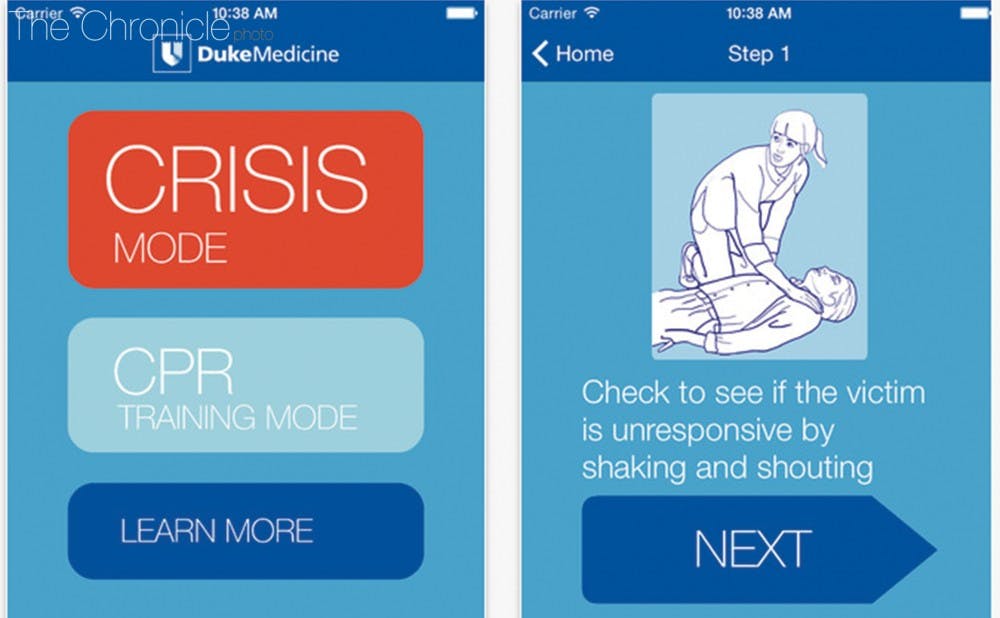After three years of development, Duke Medicine released a student-created app earlier this year that instructs users in performing compression-only cardiopulmonary resuscitation.
The Duke CPR app was first designed and developed by a team of undergraduates in 2012, when Kathy Kastan—director of the women’s health and advocacy initiative at Duke Medicine—pitched the idea to the students. Release of the app took three years due to branding and legal concerns.
The app is part of a larger compression-only CPR initiative that is being sponsored by the University’s Heart Center. The initiative seeks to raise the compression-only CPR rates in Durham and the rest of the country by educating the public with classes, videos and now the Duke CPR app.
“The passion behind it was to really change the compression CPR rates in the country,” Kastan said. “If you know compression CPR as a layperson, you have double the chances of saving someone who is in cardiac arrest.”
Duke’s efforts to teach citizens compression-only CPR mirror a movement throughout the nation. The American Heart Association, along with other organizations, have been promoting this CPR technique for bystanders, which involves just compressions and not mouth-to-mouth breathing.
The app itself has two modes: a training mode that teaches users how to perform compression-only CPR and a emergency mode that guides users through actually performing compression-only CPR in an emergency. There is also an option that gives users links to more information about CPR.
Three students—Zahava Alston, Alexander Bruce and Andrew Patterson, all Trinity ’13—designed the app as part of the course CS290: Apps: From Concept to Client, taught by Robert Duvall, lecturer of computer science, and Richard Lucic, associate professor of the practice of computer science. They chose the Duke CPR project from a list of various projects that had been pitched by potential clients to the class.
“This app, we felt, had the biggest chance to make a difference,” Patterson said. “It had the biggest chance of having an actual impact on someone’s life.”
Lucic explained that this kind of real-world app design is by no means abnormal in CS290, now taught as CS408: Delivering Software: From Concept to Clients. In the past five years, he said, the class has produced about a dozen app prototypes that are currently available on the iTunes app store and another dozen prototypes that have been used elsewhere in some form.
Duvall also emphasized that the class focuses very much on the process of creating an app, since it is very difficult to go from concept to final product within the span of a semester. He also noted that students collaborate directly with their clients as a part of the app-design process.
Kastan, who has been working on the project since 2012, explained that there were some difficulties with releasing the app, which is why it was not released until this year.
“We had a major change in our branding at Duke Medicine, so we had to reconfigure all of the graphics, change the color and get everything up to the guidelines, and that took a long time,” she said, noting that risk management and legal review also took a considerable amount of time.
Kastan said, however, that she was very pleased with the final result, and especially the positive reception that the app has received since its release.
“It has been quite a trip to get this [app] out there, so it was great to see that people liked it,” she said.
Patterson, who passed the app off to the Duke Medicine team back in 2012, also expressed satisfaction with the app’s progess.
“It has been very exciting for the app to actually reach the app store...as a developer, it is very nice to see your work finally reach the public,” he said.
Get The Chronicle straight to your inbox
Signup for our weekly newsletter. Cancel at any time.

